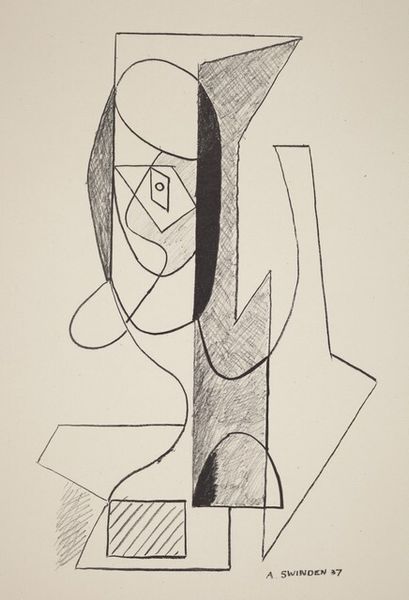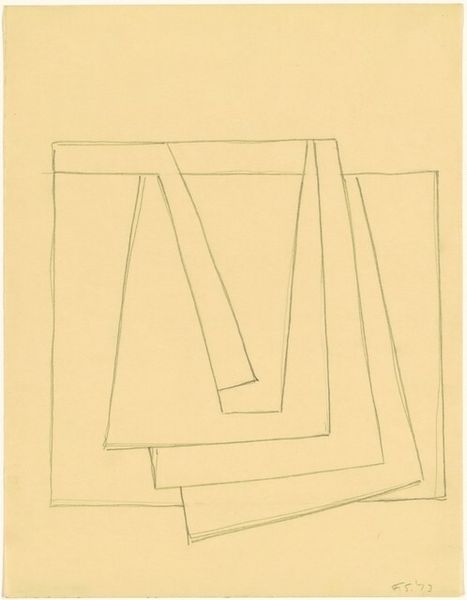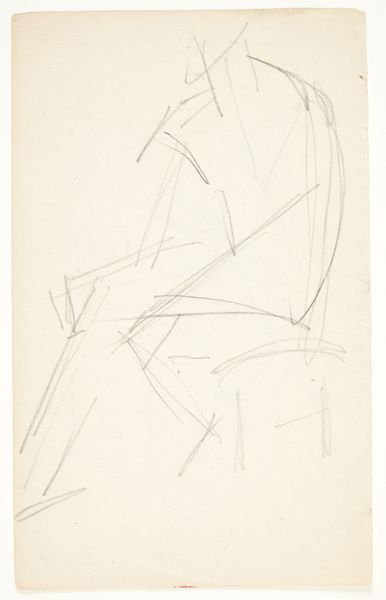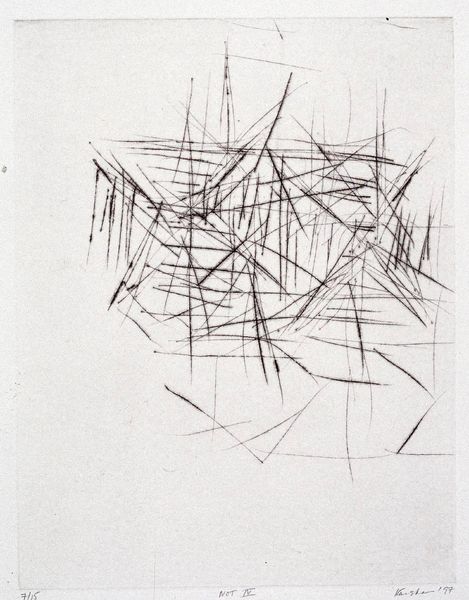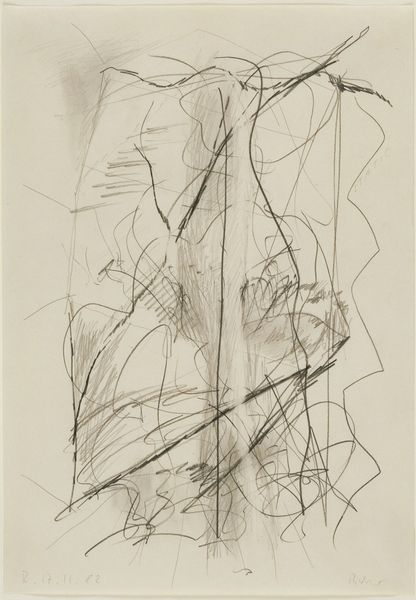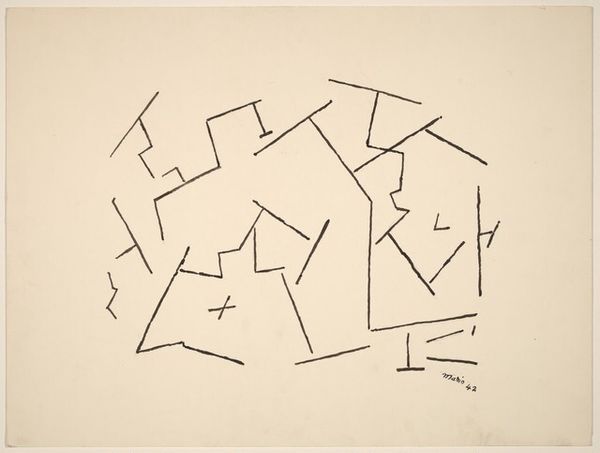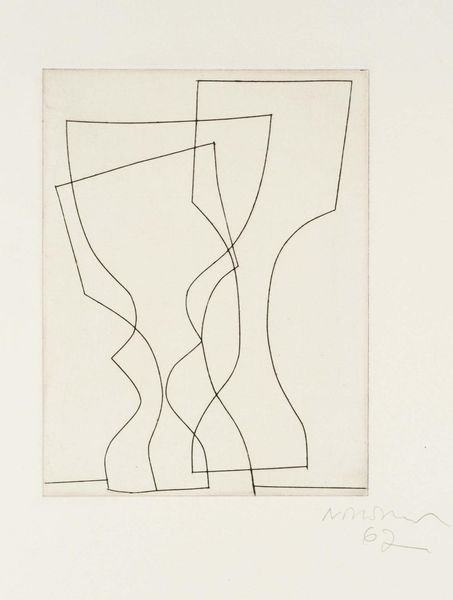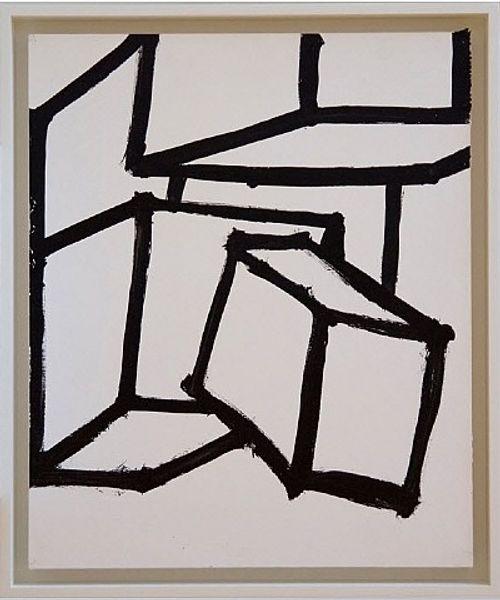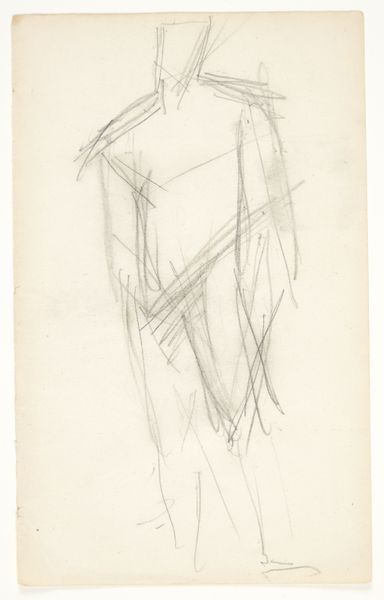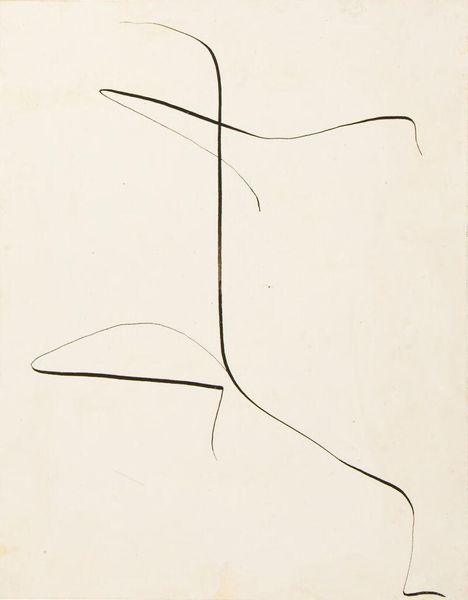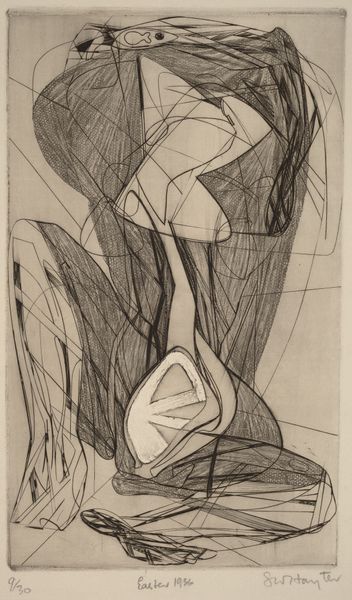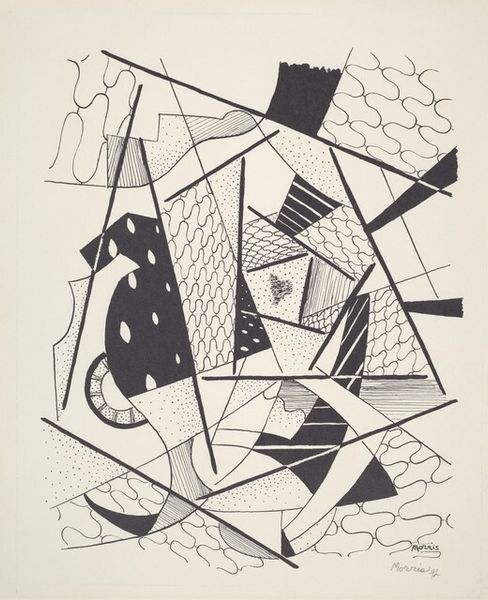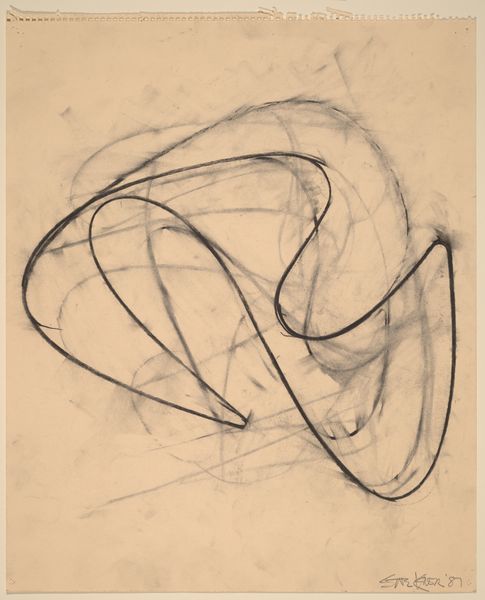
Dimensions: overall: 42.6 x 35.7 cm (16 3/4 x 14 1/16 in.)
Copyright: National Gallery of Art: CC0 1.0
Editor: Here we have Howard Mehring's "Untitled" from 1976, an ink drawing. It's minimalist in a way, just a few black lines on a light background. It feels almost like a sketch or a preliminary study. What's your take on it? Curator: This piece offers a valuable glimpse into artistic production. Looking at the materials—ink, paper—and the deliberate yet seemingly spontaneous application, what can this tell us about Mehring's process? Is it a rejection of high art formality? Consider the labour involved; each stroke a conscious act. Editor: It does feel very immediate, like the artist was working quickly and intuitively. The lines overlap and intersect. It looks like a geometric figure trying to come into focus. Do you think that reflects something about the artistic context of the time? Curator: Absolutely. Post-war art was consumed with redefining the boundaries of artistic practice. Think about Minimalism's challenge to traditional sculptural forms through industrial materials. In a similar vein, here the supposed ‘lack’ of traditional subject matter challenges notions around what constitutes art. How might Mehring’s access to specific materials like high-quality inks or papers have influenced the final product? What are the socio-economic factors involved? Editor: That’s fascinating. I hadn't thought about how the materials themselves could be a statement. I suppose that focusing on process kind of democratizes art making. Curator: Precisely. It shifts our gaze to the act of creation, questioning established hierarchies of skill and subject matter, bringing it down to the material conditions and labour that made the artwork. Editor: This has given me a completely new lens through which to view abstract art. I am so much more attuned to artistic processes now! Curator: Indeed. Seeing art through a materialist lens is all about appreciating how it exists not in a vacuum but within very specific networks of production and consumption.
Comments
No comments
Be the first to comment and join the conversation on the ultimate creative platform.
